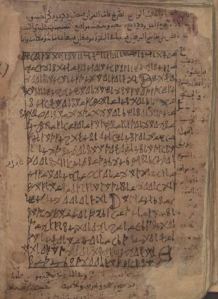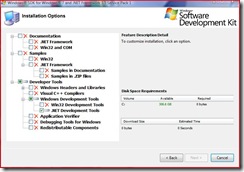Critical editions, copyright, and fiqh
March 3, 2010
For many years now I’ve watched debates on sharia and copyright—and specifically copyright on works of `ilm al-din—go round and round with very little new progress made. This is, I suppose merely reflective of the same ground reality of near-universal disregard of copyright which shapes the general debate.
But what’s surprising is that some of what seems to draw the most ire from those in favor of protecting content creators’ investments is the habit—especially in the Arab world— of “unscrupulous” publishers reprinting the texts of critical editions prepared at great expense. We’ll ignore the fact that many critical editions are actually masters and doctoral theses. The simple, plain truth is that a critical edition of a public domain work (and it would be extremely rare to find a critical edition of a non-public domain work) is not a copyrightable work in itself. Frontmatter, footnotes and so on will be subject to copyright, but the text itself is merely a reproduction of something already free to all—no matter how much effort and cost was expended in preparing it. I suspect that even those footnotes which point out variations between manuscripts are also part of the public domain as they constitute facts, and one can not copyright a list of facts. Yes, a pdf of a scanned copy of a critical edition is probably a copyright violation, but printing a separate edition based on the text prepared by the editor should be perfectly legal. And unless the proponents of shar`i copyright—which in my opinion has no leg to stand on aside from local law—are willing to contend that the sharia’s protection of creator effort and intellectual property extends beyond what the relevant statutes and treaties require, it must be ceded that this action is entirely permissible.
Fixing 32 Bit DLL Dependent .NET Apps for 64 Bit OSes
February 23, 2010
The Dawat-e Islami IT team has done something incredible in putting together their Fatawa Rizwiyya Sharif application. Unfortunately, this team seems to be an all Microsoft shop. We’ll make dua for them on that.
Meanwhile, there seems to have been a slight oversight in releasing the software. Insha’ Allah we can get them to devote a few minutes of tawajjuh to this and rebuild the executable they distribute.
The problem is this: the app depends on [something related to] the Jet DB Engine, which is not only deprecated, but does not run natively under 64 bit versions of Windows. This does not mean that the software cannot run under 64-bit OSes, but rather the OS needs to know to run it app as a 32-bit app. Unfortunately Visual Studio compiles apps by default as platform agnostic, and 64-bit users receive an error. IIRC the error is something like “Microsoft.Jet.OleDb.4.0 provider is not registered on the local machine.”
While we wait for a fixed version, there is a fix you can perform locally. To change the 32-bit execution flag, just run:
CoreFlags.exe FatawaeRazaviya.exe /32BIT+
(Determining the full path for each of these executables is left as an exercise for the reader.)
CoreFlags is a part of the .NET SDK. If this is not already installed, download the latest version of the installer. (You can use the “for Windows 7” version on Vista – and it will probably correspond to the version of .NET you have installed.) In the installer, you only need to check: Developer Tools > Windows Development Tools > .NET Development Tools.
After changing this one flag, the app will work beautifully, assuming you have taken the necessary language setup steps.
Allah reward Ala Hazrat رضی اللہ عنہ and Hazrat Maulana Ilyas Qadiri and all of those working for Dawat-e Islami, and especially the programmers and ulama who have taken part in this effort a thousand times for every click of every user, and 100,000 times for every time someone acts on a point learned from a work prepared or question answered using this software.
I’m not really a Windows or .NET person, so if I’ve made any mistake in my explanation, forgive me and correct me.
Oldest extant Ibn `Arabi manuscript
April 19, 2008
Last summer’s newsletter from the Ibn Arabi Society described what appears to be the oldest surviving copy of one of Shaikh-e Akbar Ibn `Arabi’s works – the `Anqa Mughrib – in the Berlin State Library and now in the Society’s digital archives. The copy has a date in Shaikh-e Akbar’s (قدّس سرّه) own hand of Jumada al-Ula, 597, which will be 832 (hijri) years ago next month. It also includes two pages of “coded” writing in the masters own hand, one of which is shown here.
A remarkable document – the earliest known Ibn ‘Arabi manuscript
Stephen Hirtenstein writes: I can confirm his findings, and add that the remains of the cover page (only the right-hand bottom corner survives) has some fragmentary lines in Ibn ‘Arabi’s own distinctive hand, mentioning al-Habashi, his own name, and the town of Fez in the month of Jumada al-Ula [59]7H (= Feb 1201). Below this is a barely legible and rather tantalising sama’ certificate in a different hand, mentioning a reading of the whole work in front of at least four people (some of the names are too faint to be identified or are missing).
Two of these, Isma’il b. Muhammad b. Yusuf al-Ansari and ‘Abd al-Rahman b. Muhammad al-Lawati, are known to have also been present at the Cairo reading of the Ruh al-quds in 603H, and so could be counted as part of the original group of disciples and companions who came with Ibn ‘Arabi from the Maghrib. In both cases the association was close and long-lasting: al-Ansari recited the Taj al-rasa’il in 613H in Ibn ‘Arabi’s house (probably in Malatya) while al-Lawati heard the K. al-Isra’ in the author’s house in Damascus in 633H.
If you’re interested in the subject of quasi-historical, secret and mystical (for lack of a better word) alphabets, this is an interesting online find: an apparently 18th century collection of alphabets purchased in Beirut in the ’20s and now at Princeton. Each alphabet is presented first as pronunced, and then as written.
This oddly fascinating report has room – if not need – for lots more analysis. It’s interesting that the top levels in every category are dominated by established titles which have been selling well for a few years. This in spite of the fact that the presence of new titles has some role in the growth (or loss) reported here:
You’ll notice in the Mid-Major languages that Ruby and Actionscript are the two languages that are showing growth when you compare 2006 and 2007. Both ActionScript and Ruby achieved their growth by adding more titles to the list. Remember that does not mean that more titles were published, but that more made it into our Top 3000 report from Bookscan.
Hot trends in web and software development seem to lead to a glut of new books roughly a year after they hit the blogosphere and IRC. This usually seems to coincide with the second round of adoption. And yet it seems to be the first round of (early – perhaps even now out of date) books which benefit from the second burst of interest. Obviously I’m extrapolating from Ruby/Rails here, but it seems to be there in the other case. Also, notice that JavaScript lost 10% of its market share in spite of a burst of nearly identical us-too Ajax titles over the past year. While a lot of these books (in Ruby, Ajax, php, Python, etc.) are noticeably less useful than the free documentation available on the web, most of them have benefited substantially from the collective wisdom and shared experience of the early adopters. But they seem to have a hard time attracting interest. Is that just on the strength of in person or online recommendations and reviews grandfathered from a time when there was only one place to learn something? And why do publishing companies bother? Surely they must get some inkling when everyone of the six other people doing their job in the country is signing people for three or four new books on the latest thing?

